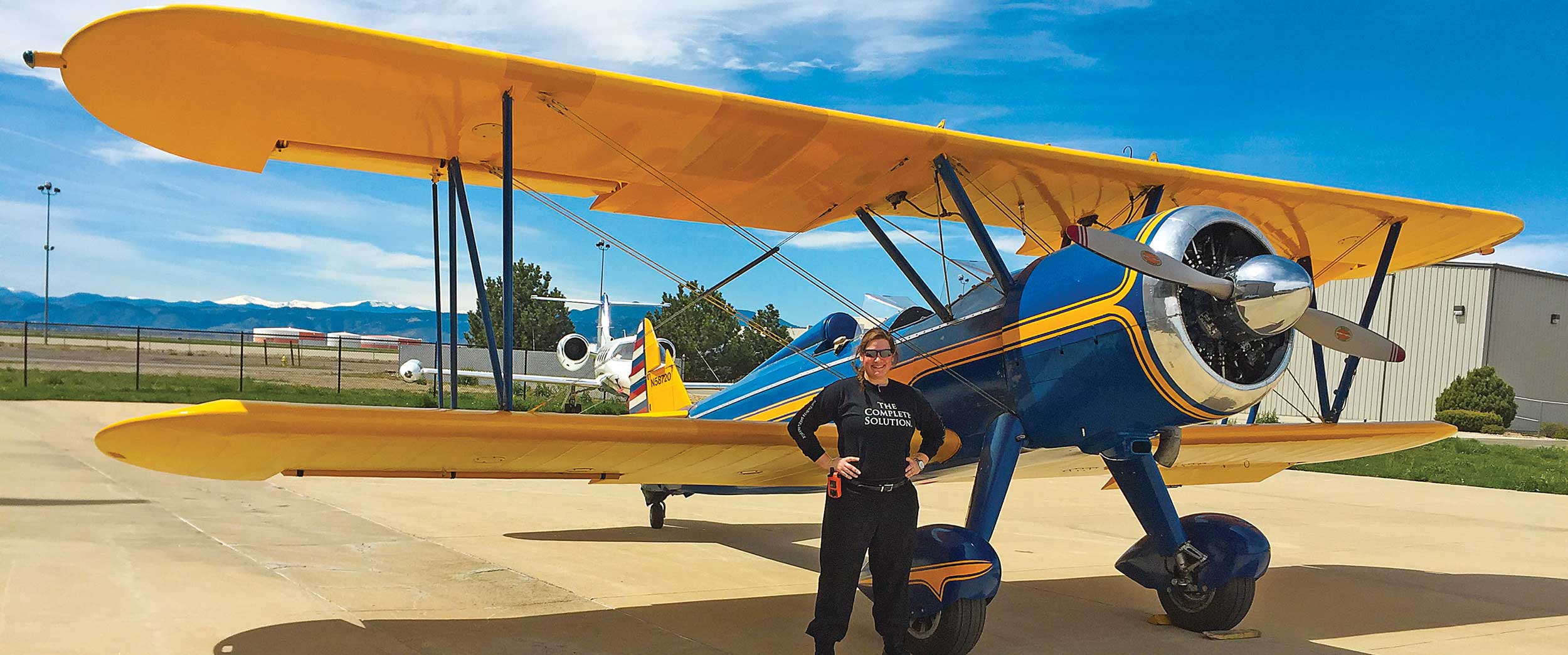 I Get Paid For This…
I Get Paid For This…
A ferry pilot who’s delivered over 100 types around the world, from the Alaskan wilderness to the South American rainforests. Interview by Yayeri van Baarsen
How did you get into flying?
I took a discovery flight aged 21 and fell in love with aviation. From my first take-off I knew that it was what I wanted to do for the rest of my life.
Actually, aged eight, I told my aunt I wanted to become an airline pilot, but it was never encouraged by my parents, who just thought it was a phase I was going through.
Tell us about your job…
I work as an airline pilot one week per month, but the rest of the time I devote to my business, Full Throttle Aviation. I give out quotes, divide ferry work among my six pilots and, of course, I also deliver aeroplanes myself, to anywhere they’re needed. Usually, it’s because owners aren’t qualified to fly their aeroplane, don’t have the time or aren’t insured. Generally, I don’t take cargo but occasionally the owner comes along.
In this job it’s important to be resourceful, deal with paperwork, keep yourself proficient, know about weather, have good mechanical knowledge and, above all, possess great planning skills. Anyone can be taught how to fly an aeroplane, but it’s alway hard to find good ferry pilots. I’m lucky enough to have an excellent team who safely get every aircraft to its destination as on-schedule as is possible.
A real advantage of my job is that I get to pick my own schedule. Also, the views are amazing – I’ve seen the Rocky Mountains, Greenland’s icecap and Central America’s rainforests. I get to fly many different aircraft. Bush planes like the Super Cub and the Champ are great for low-flying and really seeing the scenery, but I also enjoy piloting rarities, such as the Ryan PT-22 Recruit, or challenging types, like the Stearman. I love flying open-cockpit, although it can get quite cold.
The most interesting ferry I’ve had was taking a Canadian crop-duster from Canada to Belize, for people who wanted to start a business spraying bananas in the rainforest. On that trip I fell in love with the culture of Belize. That’s part of what makes my work so great – travelling, meeting different people and learning about their culture has changed my perspective on life.
What training did you have?
I haven’t had any formal training in business or done a course on how to become a ferry pilot or anything. It all started when someone asked me to ferry their aeroplane, as I had a CPL and a reputation for flying older tailwheel aircraft.
So I taught myself a lot about weather, reading everything available about wind patterns and ocean currents, and how they, together with the geography of a region, influence meteorological conditions. Being able to predict the weather is incredibly important for a transatlantic ferry pilot. If you’re flying over the North Atlantic, maxing-out the aircraft’s range, you don’t really have a lot of options if things go wrong.
What’s been your most memorable flight?
Taking a Bellanca Super Viking from Florida to Alaska, in August 2015. I followed the Alaska Highway, stayed overnight in small towns and flew between mountains – the scenery was just breathtaking.
And your favourite airfield?
Alpine Airpark in Wyoming. It’s a beautiful flying community where all of the houses and hangars are made of wood. There are bicycles at the fuel pumps, which you can use to ride into town, and nearby there’s a lake with bright blue water for canoeing or to go horse-riding around. When I retire, I want to buy a house there so I can live on that little airfield.
Do you get to fly much outside work?
Yes, I often meet with friends in Texas, to fly in formation to an airport with a restaurant, where we’ll get a milkshake or go for a sunset BBQ. There’s a lot of uncontrolled airspace in rural Texas so sometimes we arrange to meet up in the air, over a crossroad, and talk on the radio.
What’s the most valuable career advice you’ve received?
A mechanic once told me that, “The only way that you can make it in aviation is if you can’t see yourself doing anything else,” and it’s so true.
Aviation is a tough career path – students are struggling to pay for training whereas novice pilots are striving to build up their hours, so in order to succeed you have to never, ever give up. It took me many years of perseverance and persistence, a lot of struggle and hard work, but now I’m literally living my dream job.
Flying CV
Sarah Rovner is the owner of and chief ferry pilot for Full Throttle Aviation. She’s flown a total of 107 types in 10 different countries
Started work November 2013
Now flying Piper Super Cub, SkyReach BushCat and, for airline work, Bombardier CRJ
Favourite Piper Super Cub
Hours at job start 700
Hours now 3,500